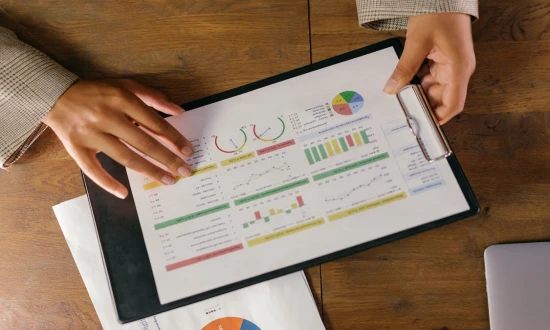As an investor, you want to maximize your profit while minimizing risk. One of the most powerful tools in your investment toolbox is cyclical asset valuation. This method helps you make better investment decisions by evaluating when to buy or sell based on economic cycles.
What Is Cyclical Asset Valuation?
Cyclical asset valuation is a method to assess the value of an asset according to where it stands within the economic cycle. It considers business cycles—periods of economic expansion and contraction. For example, the economy might be booming one minute and facing a recession the next.
Understanding these cycles is crucial. It lets investors take timely actions aligned with market trends. Rather than blindly following stocks or real estate, cyclical valuation considers the economic climate.
The Economic Cycle Explained
The economic cycle typically has four phases:
1. Expansion: Economy grows, leading to increased spending.
2. Peak: Economy reaches optimum performance before a downturn.
3. Contraction: Economic activity slows down, leading to reduced spending.
4. Trough: Economy suffers the greatest decline, eventually stabilizing and leading to recovery.
Recognizing where an asset fits within this cycle helps you make smarter choices. Awareness can lead to increased profits or reduced losses.
Why Is Cyclical Asset Valuation Important?
Investors equipped with cyclical valuation skills stand a better chance of making profitable investments. Here are some reasons why it matters:
- Identifying Opportunities:
By recognizing patterns in business cycles, investors can spot opportunities before others. Buying when an asset is undervalued can bring substantial profit when the market rebounds.
- Avoiding Losses:
Cyclical valuation can help you avoid buying assets at or near their peak. Selling prior to a downturn can protect your investment from major loss.
- Informed Decision Making:
Knowing where an asset sits in the cycle allows for informed choices. This insight transforms speculation into strategic decisions.
Tools for Cyclical Assessment
There are various tools and indicators to help assess an asset's cyclical position. These include:
- Economic Indicators:
Go-to indicators like the GDP growth rate, unemployment rate, and inflation figures provide insight into current economic conditions. They establish whether the economy is expanding or contracting.
- Valuation Metrics:
Look at indicators like the Price-to-Earnings (P/E) ratio. In an expansion phase, a high P/E might be acceptable, but it could signal overvaluation during a contraction.
- Market Sentiment:
Understanding general market sentiment can reveal whether investors are optimistic or pessimistic. Often, high optimism during expansion leads to bubbles, while extreme pessimism during a trough means undervalued assets.
How to Incorporate Cyclical Valuation in Investments
Integrating cyclical asset valuation into your strategy might seem complex, but it boils down to a few key steps:
- Research the Economy:
Stay engaged with economic news. Knowing what's changing in the economy will help you better assess cycles.
- Analyze Current Assets:
Regularly evaluate your current investments based on their cyclical position. If you uncover signs of an impending downturn, consider selling.
- Diversify Your Investments:
Invest in a mix of assets. This diversification can help offset risks during downturns. For example, coupling stocks with bonds can smooth out performance.
Real-World Applications
Looking at real-world examples can provide clarity on cyclical asset valuation. For instance:
- During the 2008 financial crisis, many investors suffered because they failed to recognize the signs of an impending trough. Timing their exit to preempt losses could’ve spared them from market turmoil.
- Conversely, savvy investors that bought real estate in the lower part of the cycle reaped rewards when the market recovered a few years later. Their foresight led to considerable profits.
In the end, cyclical asset valuation is not just a trend; it's a necessity in investing. Understanding the importance of business cycles and applying thoughtful assessment can offer a significant edge.
According to a study by Nero and Scullin (2021), investors using cyclical valuation made up to 30% more profit compared to their non-using peers. That's a figure to consider seriously!
Investing isn’t just about numbers; it’s about making the right choices at the right times. By mastering cyclical asset valuation, you can join the ranks of informed investors who achieve success.



